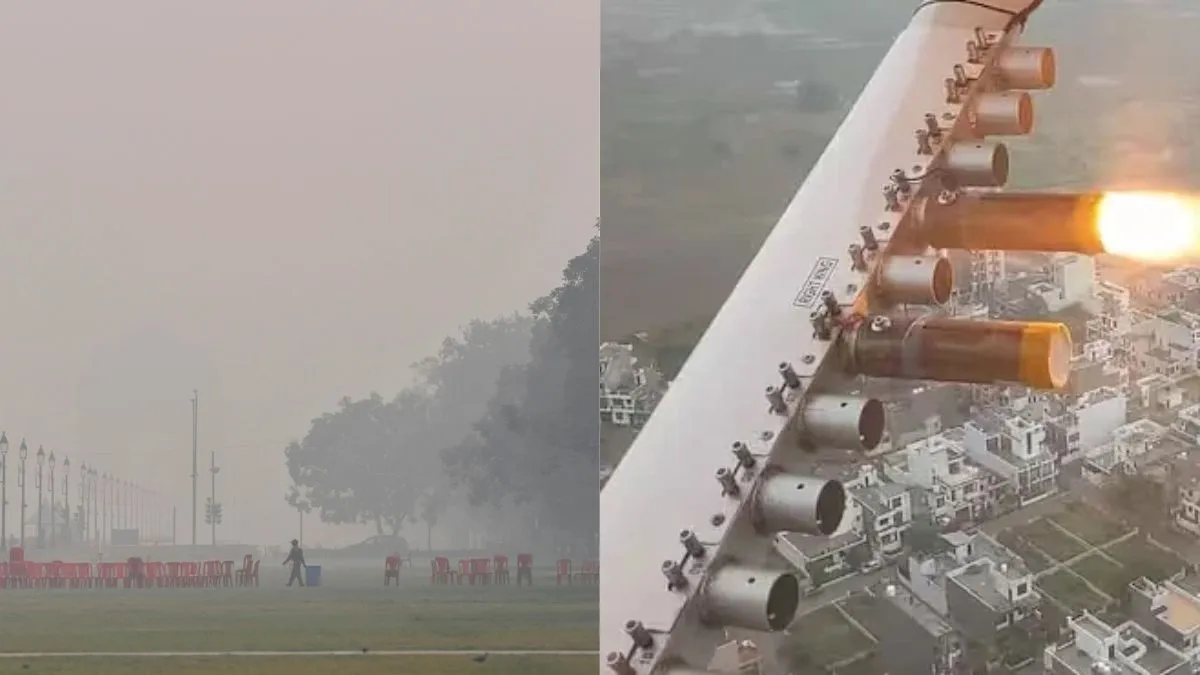- By Akansha Pandey
- Wed, 29 Oct 2025 10:08 AM (IST)
- Source:Jagran News Network
Environmentalists and scientific experts have outright rejected cloud seeding as a viable solution for the severe air pollution crisis, labeling it an immature technology that fails to address the root causes of emissions.
They collectively argue that the focus must remain on "ground-based measures" rather than "aerial ones."
Technical Immaturity And Environmental Risks
Experts highlighted significant flaws in the technology and its potential consequences:
Technology Not Ready: Prof Manju Mohan, former head of Atmospheric Sciences at IIT Delhi, stated that the technology is "not yet mature enough" to handle such a serious situation. She said it may be suitable for research but is "not at all" ready for practical application.
Unreliable Results: Prof Mohan explained that clouds "tend to move from their location" after seeding. "In such a scenario, even if it does rain, it will happen elsewhere," she said, meaning it will not yield the desired results.
Chemical Harm: She warned that chemicals released in the process "can be harmful to both the environment and humans if used excessively."
Contamination Of Soil and Water: Environmentalist Vimlendu Jha echoed this, noting that chemicals like sulphur and iodide, which are introduced into the clouds, also affect the soil and water bodies.
Limited Scope: Jha also pointed out the method's limited, city-specific nature. "What about the pollutants coming from neighbouring states?" he asked.
A "Cosmetic" And Temporary Measure
The experts unanimously dismissed cloud seeding as a short-term, superficial fix, comparing it to other failed projects.
Not a Long-Term Solution: Sunil Dahiya, founder of Envirocatelyst, categorized cloud seeding with smog towers and anti-smog guns as "cosmetic measures that may provide short-term benefits, but not long-term ones."
Distraction from Real Source: Jyoti Pande Lavakare, an environmentalist, compared the trial to "previous short-term measures like smog towers." She stated, "The only way to reduce pollution is to reduce emissions, which no one is prepared to do." She called adding chemicals to the air "about appearances, not real impact."
Temporary Relief: Vimlendu Jha added that even if successful, rain "is only a temporary measure that can provide relief for a few days. This cannot be done every time."
The Real Solution: Focus On Ground-Level Emissions
The experts agreed that the only lasting solution is to tackle pollution at its source.
Tackle Real Sources: Sunil Dahiya urged that to improve air quality, "emissions from transport, energy, waste, and construction must be tackled." He called for "collaboration between states and agencies, adopting an airshed-based approach."
Policy Weakness: Lavakare noted that recent policy decisions, such as "rolling back emission norms for thermal power plants," have actively weakened pollution control efforts.
Path To Lasting Improvement: Kriti Gupta, another environmentalist, said that while "scientific trials" can be considered, they "should not be prioritised as the sole option." She stated that "for lasting improvement, citizen awareness, reduced use of private transport, control of construction dust, and better waste management are essential."

